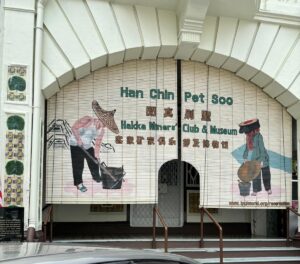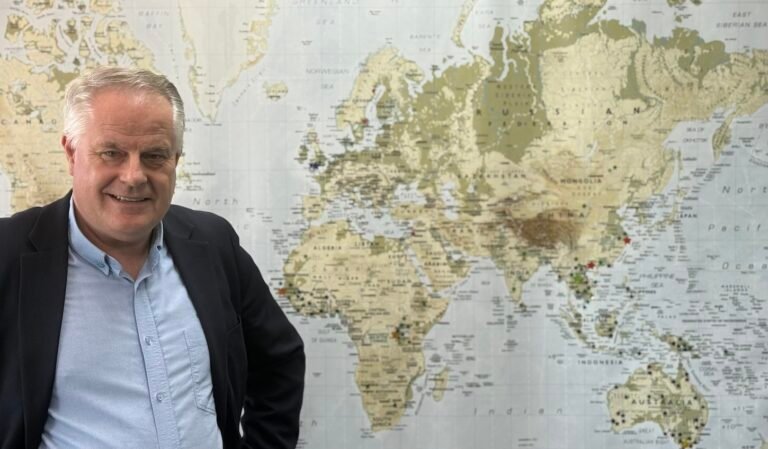Ipoh was once a prosperous hub for the tin rich interiors of Malaya. Responsible for half the world’s tin production. Today, Ipoh, Malaysia, is a city known for its unique blend of history, culture, and natural beauty.
Contributor: Jenny Chin
Approaching Kuala Lumpur Sentral train station with some trepidation, I was glad to see abundant passengers waiting quietly for the newly launched express service to Ipoh. My last journey with KTMB, Malaysian railways, was some 30 odd years ago, a 6-hour trip that turned into a 13-hour nightmare! (caused by a diesel engine breakdown). After this experience I swore off rail travel, for good. But in need of a break from the relentless congestion of Kuala Lumpur – this month in 2024 – I was keen to rediscover my late father’s hometown.
Ipoh was a prosperous hub for the tin rich interiors of Malaya once responsible for half the world’s production, but now attracts local tourists from Kuala Lumpur and Singapore looking for the kind low key charm that have all but disappeared from their ultramodern metropolises.
After a slight delay, the journey took only 2 hours. The gleaming colonial era Ipoh train station and the grand government offices adjacent to it, are testimony to the city’s past economic importance. Perhaps one day, the shut-up station hotel wing of the station will once again provide full service for travellers instead of them having to walk to Little India nearby for a pre-journey meal.



Image Provided: Jenny Chin
The city which lies in the Kinta River valley, is dotted with forested limestone hills punctuated by cool caves turned into Buddhist temples. At Kek Lock Thong (Cave of Ultimate Bliss), further on from the impressive stalactites framing the cave temple, there is a lake and kiddies’ playground surrounded by more hills. Just outside town, at Banjaran Hot Springs, you can stay at private villas in a resort set amidst this forested karstic landscape. There are geoparks further afield for hikers and naturalists. A more curious visual folly reminding visitors of the Malaysia’s colonial history lies some 20 km from Ipoh at Batu Gajah. The Moorish style Kellie’s Castle was built by a Scottish miner and planter who had done well at the turn of the 20th century. Sadly, it was never completed after he died.


Image Provided: Jenny Chin
In town, locals have turned their artistic talents to painting nostalgic murals of Ipoh life around Concubine Lane (so called because it was the red-light district where rich businessmen and miners kept their girlfriends or second wives). Today occupied by touristy stalls, a more authentic Ipoh experience can be had at the various old school coffee shops nearby serving delicious versions of soup noodles, rice dishes, and Malay delicacies such as otak otak. Thean Chun is an Ipoh icon but beware the lack of air-conditioning and cash only trade. Closer to the night market, along Jalan Yau Tet Shin, bakeries continue with their innumerable lines of sweet savoury biscuits – chicken flavoured, walnut cookies, peanut brittle – all reminiscent of their southern Chinese origins.
Ipoh provides a more intimate glimpse of a less hurried past which blended the local multicultural symphony (Malay, Chinese, Tamil and Eurasian) with colonial influences, now lost from larger cities on the Peninsula. Perhaps this is what animates the local crowds and many from further afield such as the Danish family I met on their third visit. Together we watched the school marching band rehearse complicated manoeuvres for impending 31 August national day celebrations from our hotel rooftop. They have made over 10 trips to escape the feeble summers of Copenhagen and indulge their fascination with Southeast Asia.
With the introduction of a new generation of faster trains mainly built by the Chinese, this greener way of commuting will only gain in popularity in Asia as it gives visitors a chance to experience rural life and smaller cities. Check out Bandung to Surabaya, or Vientiane to Luang Prabang.
Tickets for the return KL-Ipoh ETS express cost less than A$40 but strong demand for the once-a-day service means it is often booked out on the weekends. Only electronic tickets are available requiring registration with KTMB on its website or app. There are lockers at both stations. Whilst the commute was very comfortable, heavy rain or congestion caused a signalling delay of nearly 30 minutes near Rawang as we approached KL on the return. Accommodation In Ipoh ranges from luxury resorts to moderately priced global brands and boutique hotels in the old town.
Contributor: Jenny Chin. Australia. Board Director.












